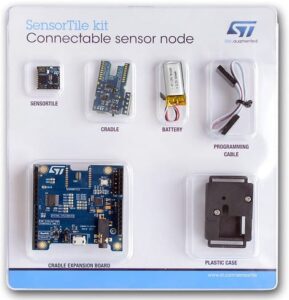The IEEE International Sensors and Measurement Systems Student Council hosted a series of 3 design contests globally (all sponsored by ST) over the past several months. The most recent contest concluded at the meeting of the IEEE Instrumentation and Measurement Society (IMS), which helped organize the contests, in Houston, TX. The competition challenged Master’s and Ph.D. students to create a proposal for an innovative sensor and measurement system application using a platform made from one STMicroelectronics SensorTile® kit plus two SensorTile “Core Systems.” From the submitted proposals, a selection committee of judges chose finalist teams to receive the ST kits they would use to implement and polish their designs. With SensorTile’s versatility, extensive development ecosystem, and ease-of-use, ST’s sponsorship was aimed to extend the global awareness of the valuable SensorTile resource even further than the course, Introduction to Embedded Systems with SensorTile, developed by Professor William Kaiser, at UCLA.

The Houston meeting of the IEEE IMS, like the IEEE Sensors Conference in Glasgow (Nov 2017) and the IEEE Sensor Application Symposium in Seoul (Mar 2018), provided an outstanding forum and audience for student teams to demonstrate their incredible creativity, inventiveness, and the cleverness of their designs. An ad hoc panel of judges at each demonstration session presented 1st and 2nd Place awards, worth US$2500 and US$1500, respectively, for the best “Sensors and Measurement Systems” application.
The Schools
Interestingly, while the contest offered demonstration venues in Europe, Asia, and the US, teams weren’t afraid to travel: In Houston, some teams traveled great distances to represented the Politecnico di Torino (Turin, Italy); the Indian Institute of Technology (Kharagpur, India); Skolkovo Institute of Science and Technology (Moscow, Russia); Università di Napoli Federico II (Naples, Italy); and Università di Salerno (Salerno, Italy). Closer to home, teams came from Missouri University of Science and Technology (Rolla, Missouri); University of Tennessee (Knoxville, Tennessee); Western New England University (Springfield, Massachusetts); and the University of British Columbia, Okanagan Campus (Kelowna, Canada).
The judges, however, showed there was no home-field advantage in Houston. The results from the event recognized the student team from Università di Salerno with the 1st Place award for their “PAshark free-flying balloon used as a testbed for sensor data fusion in indoor navigation and target following.” For the 2nd Place award, the judges named two teams: from Politecnico di Torino, which designed “GOOFY, a smart-sensor for golfers,” and the University of British Columbia, with its “Cloud-enabled mobile sensing agent for smart agriculture. The judges also awarded a “Special Mention” to the third Italian team, from Università di Napoli Federico II, for its “POLYTILE: Self-compensating Inertial Measurement Unit (IMU) exploiting redundant configuration on regular POLYhedron of SensorTile.”

